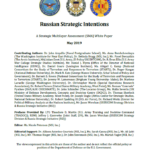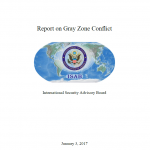
This white paper was prepared as part of the Strategic Multilayer Asssessment, entitled The Future of Global Competition and Conflict. Twenty-three expert contributors contributed to this white paper and provided wide-ranging assessments of Russia’s global interests and objectives, as well as the activities—gray or otherwise—that it conducts to achieve them. This white paper is divided into five sections and twenty-five chapters, as described below. This summary reports some of the white paper’s high-level findings, but it is no substitute for a careful read of the individual contributions.



